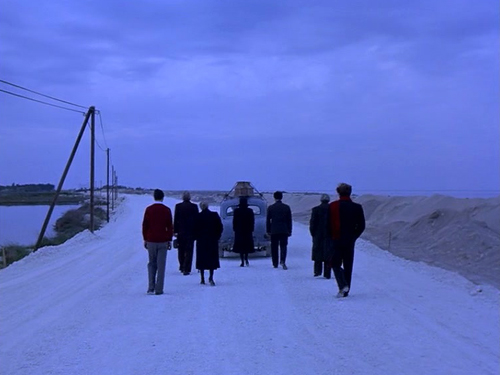
In de coulissen van het theater van de tijd
Hoewel hij de films van Angelopoulos er niet expliciet bij vermeldt, wijst András Bálint Kovács er in zijn standaardwerk Screening Modernism (2007) op dat een theatrale stijl een dominant aspect vormt van het laatmodernisme in de cinema – sommige auteurs zoals Andrew Horton gewagen zelfs van Angelopoulos als ‘de laatste modernist’. Een terugkerend motief doorheen O thiasos is precies de connectie tussen de toneelopvoeringen van Golfo door het theatergezelschap en hun trektocht doorheen de harde realiteit van de nationale geschiedenis. Deze connectie is er een van reciprociteit. Enerzijds roepen de reële gebeurtenissen op het politieke strijdtoneel de visuele setting van het theater op. Anderzijds breekt de realiteit voortdurend in in de theateropvoeringen en -repetities van de spelersgroep. Interessant is na te gaan hoe dit idee vorm krijgt, opdat een beeld op die manier zou werken.